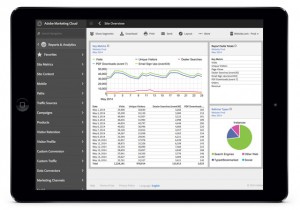Big data has become the buzzword within the digital marketing community – and rightfully so. The way we approach the abundance of data an organization has at their fingertips about their customers is the fundamental challenge that marketers face today. Marketers need to understand what questions can be asked and answered with big data or else big data is just another buzzword. The problem is many organizations can’t tell you what it is, let alone where to start.
What is Big Data?

The concept refers to the rapidly growing volume, velocity, and variety of data that is available to better understand an organization and their customer. Before the digital movement, organizations struggled to capture and measure customer behavior beyond point of sale transaction data. Marketers could not understand their audience, and as such were unable to use data-driven tactics to achieve their desired outcomes.
Since an abundance of customer activity has moved online, organizations now have access to data from a variety of sources from CRM and email platforms to fulfillment and web analytics data. There is data for virtually every interaction you have with a customer. Using insights gained from this stack of data, organizations have the ability to answer key questions about their customer.
In retail, big data can help us personalize experiences for our customers easier than ever before by offering better support through more precise Customer Relationship Management, data-driven personalized pricing and more effective advertising spend.
Financial service organizations are using big data to more effectively cater to the needs of their customers’ personal online banking experiences and detect fraudulent activity quicker than ever.
So why hasn’t everyone taken advantage of big data?
Simply put: They don’t know where to start. Many organizations look at data gleaned from different sources as separate silos of information, and they don’t know how to integrate all of the data to see the value of a unified data set.
At Starkmedia, we have found that there are four critical steps that are key utilize your data to drive valuable action.
Step 1: Connect
Gather and organize all possible sources of data into one unified data stack.
Step 2: Distill
Know what data to analyze in order to answer your fundamental business questions. Turn data into insights by digesting it into the appropriate analytics platforms, such as Google Analytics and Adobe Analytics.
Step 3: Package
Decide which insights gathered from data are useful for which stakeholders and deliver them in consumable, actionable packages.
Step 4: Optimize
Use insights to inform decision-making across your organizations by continuing to develop, test, and target messages, personalize experiences and optimize ad campaigns.
By implementing these four steps, you can effectively turn an overwhelming flood of data into a very powerful tool for your organization. Understanding how to implement this process is very much a maturity curve; it will take some time. But organizations that learn how to collect and analyze data will be rewarded with a better understanding of their customer in ways they never imagine, which will lead to more confident decision-making.
If you need help making sense of big data, contact Starkmedia today.